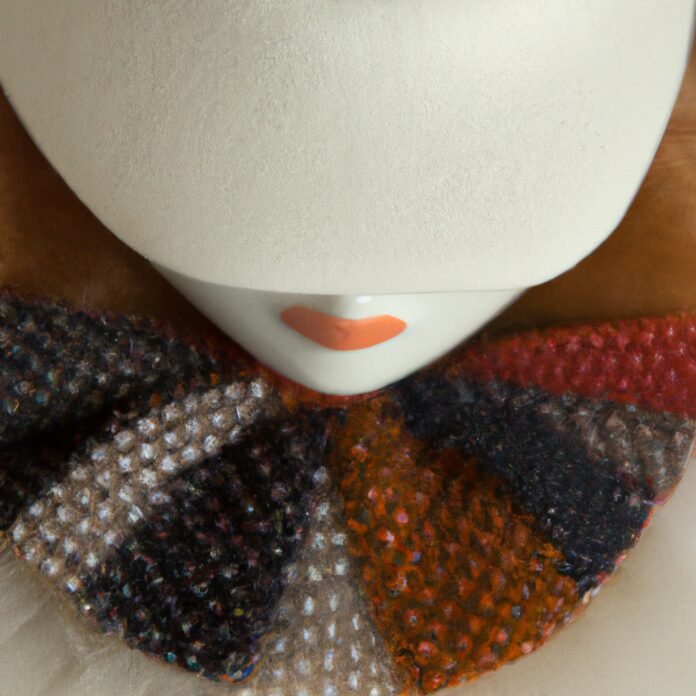From the Roaring ’20s Gatsby dresses to the cool ’90s grunge, the fashion of the 20th century is a never-ending source of inspiration for creatives all across the world. Join us as we take a walk down the catwalk and look back on the fashion classics of each decade. It’s time for a Retro Style Retrospective!
1. Timeless Elegance: Exploring the Enduring Allure of Retro Fashion
Fashion trends come and go, but certain styles always remain classic. Over the decades, certain pieces seem to effortlessly transcend time. Most of these retro items draw on creative elements from the past, giving us a feeling of nostalgia and familiarity. In recent years, the trend for vintage clothing has become ever more popular, with entire collections dedicated to recreating retro silhouettes. From the smooth lines of Sixties Mod fashion to the vibrant prints of Eighties neon, the world of retro fashion has never been more engrossing.
What Is Retro Fashion?
At its core, retro fashion pays tribute to fashion from the past. The style is highly individualistic, allowing wearers to create their own unique aesthetic. It often features vintage-inspired details, such as lace collars, high-waisted skirts and polka dot prints. Retro fashion can be both traditional, such as 1920s flapper-style dresses, as well as more whimsical iterations like ’90s-style clothing. Whichever decade you look to, one thing is for certain – there is always a timeless allure to retro fashion.
The Benefits of Wearing Retro-Style Clothing
As well as its aesthetic allure, wearing retro clothing offers several distinct advantages. Firstly, retro pieces are often good quality because they hark back to a time before mass-market clothing. Many older pieces have a pleasing vintage feel that you simply can’t replicate with factory-made garments. Secondly, timeless clothing items are much more cost-effective than buying new clothes every season – when you invest in good-value pieces, you can actually save money in the long run.
Another major advantage of vintage-style clothing is that it often helps to project a unique and creative aesthetic. When you wear retro-inspired pieces, you can be sure to stand out in a crowd of conventionally dressed individuals.
Ways To Incorporate Retro Clothing into Your Wardrobe
- Invest in timeless pieces such as vintage-style A-line skirts, pleated trousers and waistcoats.
- Look for signature prints from a particular decade, such as paisley prints from the ’70s or tropical prints from the ’80s.
- Mix and match different sizes and shapes of clothing, such as pairing a structured blazer with a looser-fitting skirt.
- Layer different colors and prints for an eclectic look.
- Try out different vintage footwear styles, such as Mary Jane shoes or oxfords.
If you find yourself drawn towards retro fashion, then don’t be afraid to experiment. Vintage-inspired looks don’t have to be all strictly one era, so feel free to mix and match. By combining classic pieces with modern items, you can create your own subtle or statement look that evokes all the timeless appeal of yesteryear.
2. Iconic Fashion Statements: A Journey through the 20th Century’s Most Noteworthy Trends
When people think of fashion, they think of the trends and icons that have defined each decade—from bell-bottoms in the groovy ’70s to the bejeweled streetwear of the early ’00s. The 20th century was a period of change and progress and fashion was no exception. Here’s a look at some of the most noteworthy trends that were popular during the 20th century.
- Flapper Fashion (1920s): A popular trend during the roaring twenties was flapper fashion. Young women strove for liberation and autonomy, and this was reflected in this edgier style of women’s wear, which was characterized by feathers, sleek and form-fitted silhouettes, dropped waistlines, and bold patterns. To add to the liberated feel, women wore minimal makeup, short hair, and cloche hats.
- New Look (1950s): During the post-war decade, fashion saw the debut of Christian Dior’s ‘New Look’. His designs featured curvaceous, feminine silhouettes combined with the accents of the era, including bold, bright pastels, exaggerated hourglass shapes, and wide skirts with petticoats. The look was a stylish yet conservative transition from the war years to more modern fashion.
- Mod Style (1960s): The late ’60s saw the emergence of the youth driven mod scene. Popularized by bands such as The Who and the Rolling Stones, modernists wore shorter skirts, drainpipe trousers, go-go boots, and vibrant hues. As a symbol of their modern lifestyles, they often carried the iconic Baguette bag.
- Power Dressing (1980s): The ’80’s ‘power dressing’ trend was the antithesis to the hippie movement of the decade prior. It featured more corporate styles with tailored blazers, wide-leg trousers, and leather boots. Large jewelry was a popular accessory choice, as were bold, statement-making colors. Power dressing signified an ambitious attitude and a strive for success among women.
Ultimately, the trends of the 20th century were ever-evolving—bouncing from minimalist to maximalist, and elegant to grungier styles. Through these iconic statements, people were able to express their identities in a distincitve way. All in all, these fashion statements speak to the eras they originated from, and will always remain iconic.
3. Rediscovering the Charm of Vintage Couture: Revisiting the Fashion Icons that Defined an Era
Fashion trends come and go, but style always remains, and there is nothing quite like rediscovering the vintage look of years past. Maria Grazia Chiuri, creative director of Dior points out that “It’s about remembering the past to create the future.” This look is well-established by fashion icons long ago:
- Diana Vreeland: As the legendary editor of Vogue, Vreeland invented much of the look of the ’20s and ’30s. She was known for her bold use of colour and prints, and her daring, androgynous silhouettes.
- Coco Chanel: Arguably the most iconic fashion figure of all, her name is synonymous with timeless classic design. A french design house and a fashion powerhouse, the Chanel brand revolutionized the industry due to its modern take on the vintage look.
- Edith Head: Head is seen as the top designer of Hollywood in the ’40s and ’50s, she was known for her daringly stylish designs that prompted the iconic look of the period.
All three of these fashion icons left a lasting impression on the world and it’s no wonder that Dior and other fashion houses today draw inspiration from their creations. From beading and embroidery to bold colour palettes and unique fabrics, vintage couture is characterized by cherishing the traditional techniques and reviving ideas from the past with a distinctly modern touch.
Vintage couture celebrates the special details of the 20th century. Its attention to detail, signature silhouettes and a particular fondness for intricate beading and detailed craftsmanship have made them unbeatable in achieving a unique beauty. Reviving this look embraces all the charm of the past and blends it into modern fashion with subtle, sophisticated touches, blending the old and new together for a totally unique look.
It is easy to see why vintage styles have been a continued source of inspiration for fashion designers. From bedazzled embellishments to layered prints and structured silhouettes, the 20th century has it all. With its timeless appeal, vintage couture is here to stay. As the old saying goes, fashion fades, but style is eternal.
4. Celebrating a Century of Style: Unearthing the Timeless Beauty of 20th Century Fashion
The 20th century was one of the most iconic eras of fashion, and ushered in styles that remain relevant and timeless to this day. The century was shaped by innovation, creativity, and unrivaled exuberance, and has since served as an inspiration for many contemporary designs.
- The Roaring Twenties – The 1920s saw the emergence of a new liberated woman, both in terms of fashion and attitude. Flapper dresses, complete with their knee-length hemlines and fringed designs, were the go-to dress for the new era of self-expression.
- The Tantalizing Thirties – During the 1930s, fashion trends shifted towards a more streamlined silhouette, with knee-length dresses and suits adorning women of the era. Women embraced collections featuring elegant lines, reminiscent of the tuxedo-inspired evening suits.
- The Swanky Forties – As the 1940s drew closer to the end of the decade, fashion designs shifted to embrace more natural shapes and extraordinarily bold adornments. Luxurious fur coats and hats were all the rage, and cuddle up cardigans and wedding-dress-worthy hats filled the closets of many glamorous women.
- The Fabulous Fifties – The 1950s presented a major shift in women’s fashion, as ladies embraced skirts of all lengths, printed blouses and matching jackets. This era was greatly influenced by the silhouette of Marilyn Monroe, as well as stars of the silver screen.
- The Spellbinding Sixties – One of the most notable fashion movements of the twentieth century began during the Sixties. This era was known for its bright, daring colors, as well as its eye-catching patterns, androgynous styles, and youth-focused resort wear.
- The Groovy Seventies – Disco inspired the look during the 1970s. With the emergence of glam rock and the punk subculture, fashion was finding a voice of its own, with daring and bold ensembles more than welcome.
- The Sensational Eighties – The 1980s ushered in a time of excess, as fashion embraced oversized shapes and flamboyant layers. This was also the decade of power-suits, with monochromatic ensemble, sharp shoulders and big shoulder pads, defining the look.
- The Nineties and Beyond – During the mid 1990s, the minimalist look emerged with grunge and deconstructed clothing, while the 00s saw the resurgence of animal print, low-rise jeans, and bold, graphic looks.
These styles may have continued to evolve over time, but remain some of the most iconic and timeless of the twentieth century. Today, the influence of these designs can be seen everywhere from the biggest runway shows to everyday street style. Celebrate the century of style, and its unwavering relevance throughout the years.
The look and feel of a more classic era have been a source of nostalgia and inspiration for many generations, and the “Retro Style Retrospective” of 20th century fashion classics highlights the timeless influence of the past on today’s designs and trends. There’s something special about the power of the past to keep our most beloved fashion trends alive and thriving.


